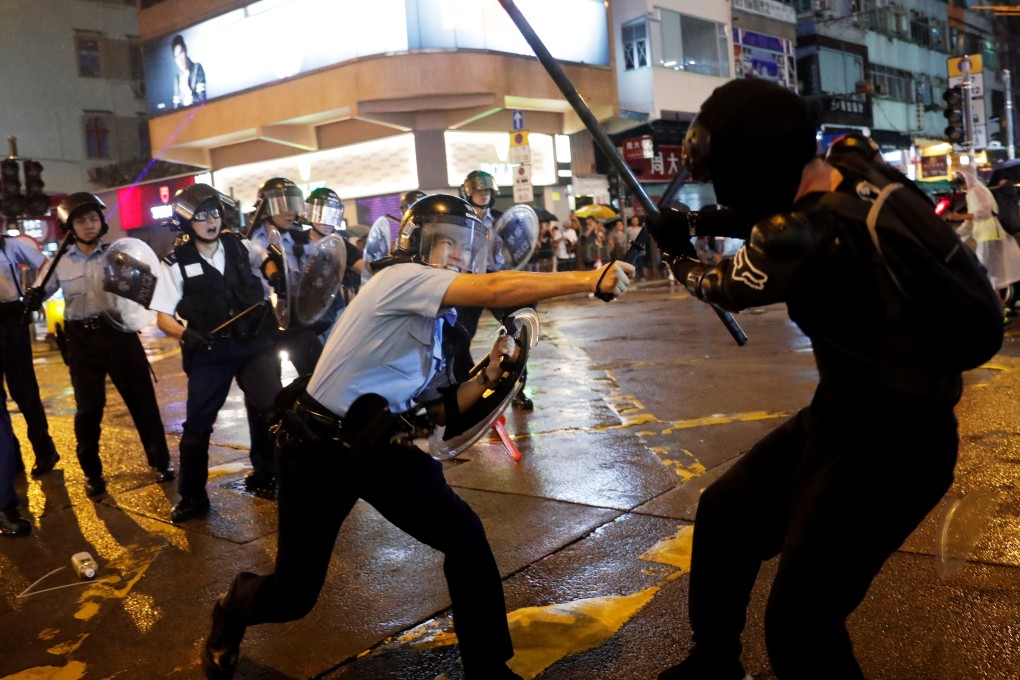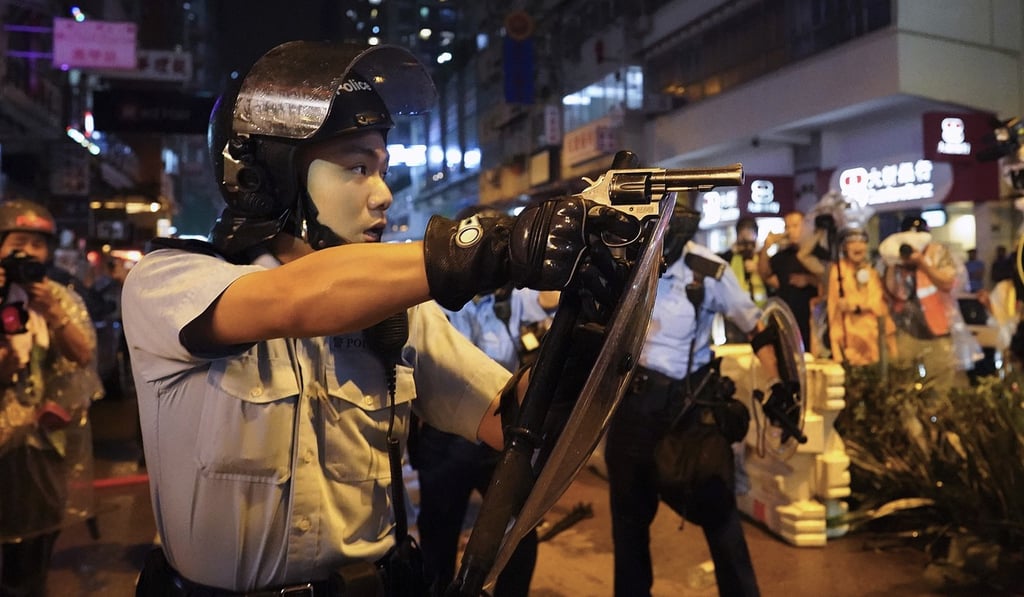Hong Kong protesters rotate tactics between radical and restrained, keeping city guessing
- Police fired gunshot and deploy one of the force’s water cannons – both were firsts after months of protest
- Many wonder which protest movement – the restrained or the radical – will show up at big march planned for Saturday

The return of violence to the streets of Hong Kong has analysts observing the protest movement’s rotation of violence and peaceful tactics and suggesting that the government just missed its best chance yet to start a dialogue with the demonstrators.
In more ugly scenes of violence, all hopes were dashed that the movement would remain peaceful after eight days without tear gas. As analysts observed, the day’s unrest proved that violence is becoming all-too-common – and peace, it seems, an aberration. Now, many are wondering which protest movement – the restrained or the radical – would show up at the next big march planned for Saturday.

“The government has to understand that it is difficult to separate the peaceful protesters and establish a dialogue with them,” said Edmund Cheng Wai, a political scientist at Baptist University. “It was not proactive enough given the rare peaceful weekend after August 18.”